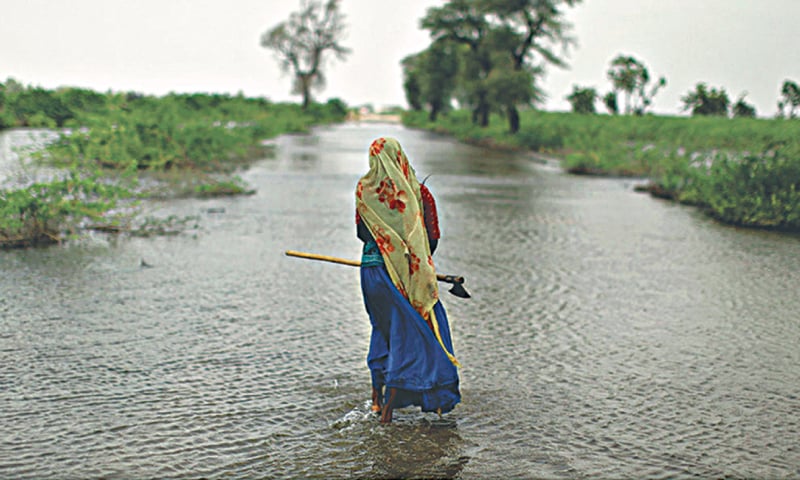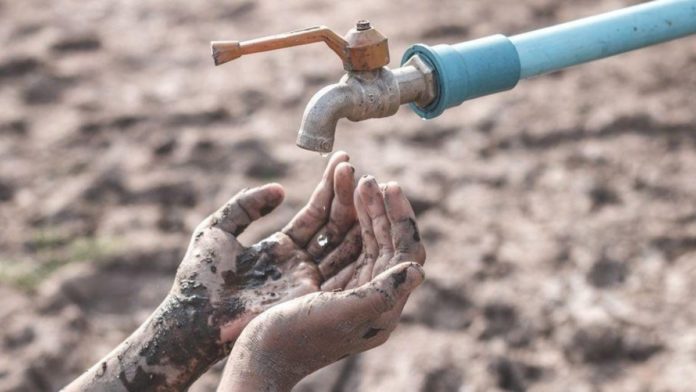Dear Readers,
Warnings of a looming disaster by the United Nations Development Programme (UNDP) and the Pakistan Council of Research in Water Resources (PCRWR) indicate that Pakistan will face absolute water scarcity by 2025. It is astonishing and deplorable that despite knowing the grim situation in the water sector no govt has been able to devise a formal water policy, a criminal negligence considering that Pakistan is primarily a I water economy. In contrast, India, Bangladesh and even Nepal have had their water policies in place for decades. Despite many drafts being prepared not a single one was approved as a policy. In 2005 a National Water Policy (NWP) draft was prepared, when it was presented to the federal cabinet it could not be approved. In 2010, a joint committee was formed to revise and finalise the water policy. It took the committee two years to submit the document to the Ministry of Law and Justice who, in its wisdom ruled there was no provision for the NWP in the Constitution, it being a provincial matter. In 2015 the NWP was again presented to stakeholders for review and updating. After another two years it was sent to the Council of Common Interests where despite being on the meeting’s agenda, it was ignored. After 70 years of wrangling, confusion, apathy and indecision all four provinces finally approved Pakistanis first NWP in April 2018, one can now only hope that the recommendations therein are implemented fully and faithfully otherwise, Pakistan will run dry, it is as simple as that. For the benefit of readers my article titled NATIONAL WATER POLICY is reproduced below.
The Pakistan Council of Research in Water Resources (PCRWR) delivered a grim warning that “water” availability in the country had touched the “water-stress line” in 1990 before crossing the “water scarcity line” in 2005, without positive action the country would run out of water by 2025. “Despite having the world’s largest glaciers, Pakistan is among the world’s 36 most water-stressed countries. As the population rapidly increases, water demand is projected to far outstrip supply. Immediate coordinated planning and implementation is required to avert disaster”. Without measures to save rapidly depleting water resources, climate change coupled with rapid urbanisation and population growth will further impact the availability of water. With a drought-like situation likely in the near future, the gravity of the situation can be graphically illustrated from the per capita availability of water in 1947being over 5,000 cubic metres, has shrunk to just 1,000 cubic metres today.
Whether it be constructing new dams, providing pure drinking water, or increasing storage capacity by building reservoirs, no government has bothered about planning for the future. Trust issues between provinces stymied all attempts at resource sharing and introducing the National Water Policy (NWP), all provincial governments and the federal government are equally responsible for finding ourselves seven years away from possible Doomsday.
Thanks to the dedication and commitment of Sartaj Aziz, former Foreign Minister, Finance Minister and lately Deputy Chairman Planning Commission till his recent resignation, the Council of Common Interests (CCI) on April 24, 2018 unanimously approved the country’s first-ever National Water Policy (NWP) signed by the then prime minister and the four chief ministers. The policy emphasises water conservation, water storage, water apportionment and under-soil water quality. Due importance has been given to the building of new dams for water storage and equitable water distribution among the provinces. The NWP empowers provinces to develop their own master plans for sustainable development and management of water resources.
The Policy addresses the many issues relating to water resources management, the most important instrument being the mitigation against the impact of climate change on water resources is storage. If the pattern of rainfall becomes erratic with more than average rain in one year and a drastic reduction in subsequent years, the only way to conserve the surplus rainwater is to store it and release it in dry years, when required. A national master plan must cater for storage, floods, arid areas, irrigation, urban water and tariff rationalization, small and medium size dams for enhancing the life of existing storages and remodeling and rehabilitation of existing infrastructure in the country. Capacity building of all water related Public Sector Organizations would be given high priority to improve their performance to generate capacity to meet future challenges of increased demand and finite water resources. Formation of regulatory bodies for ground water, with strict yet expeditious regulation mechanism and regimes will ensure sustainability, transparency, efficiency, safety and affordability. A “Ground Water Authority” established in each province will Issue, establish and enforce standards for the development and utilization of ground water.
The Supreme Court (SC) is agitated with the fact that Pakistan has not constructed any major water reservoirs since Tarbela Dam and Mangla Dam were built over four decades ago. In late March this year the Central Development Working Party (CDWP) approved the construction of the Diamer-Bhasha Dam only as a water reservoir for now at an initial estimated cost of Rs. 625 billion to be funded through local sources, this is being built. Given Sartaj Aziz’s persistence, the CDWP also cleared the Rs. 303 billion Mohmand Dam Hydropower Project for final approval of the Executive Committee of National Economic Council (ECNEC). Pakistan throws 21 million acres feet (MAF) of water into the sea every year, which can fill three reservoirs of the size of Mangla Dam. Having the potential to cater to Pakistan’s needs, the Kalabagh Dam has been politicized to the extent of it becoming controversial, building it now would be almost impossible politically.

Dr. Ismail Kumbhar from Sindh Agriculture University of Tandojam voiced concerns, about the new Water Policy saying that since the policy’s fundamental focus is food security and sustainable agriculture; both the basic commitments of SDGs are not properly addressed in the document. Several water data gaps in the policy should have been incorporated, he said, adding that rural water requirements are missing. On the other hand, Sindh Abadgar Board representative, Syed Nadeem, says that “the document misses substantiated data on water flows, groundwater extraction and water consumption of municipal, agriculture and industrial usage, but overall government has done a tremendous job”.
In the NWP, stakeholders and experts have stressed the need to urgently address the current and future threats to its food, energy and water security. Significant water-related issues raised judicious use of water and its allocation in line with economic priorities; the environmental integrity of water basins; agriculture; climate change and its impact; drinking water and sanitation; hydropower; groundwater; water rights and obligations; etc., etc.
About trans-boundary sharing of water, while Section 9 of the NWP focuses on four points mostly concentrating on unilateral action, progress cannot be possible unless the Pakistani and Indian governments start a dialogue to promote basin-wide cooperation concerning the Indus Basin within and beyond the provisions of the Indus Waters Treaty. Gauri Nooklar-Oak, a trans-boundary water conflicts researcher and a policy research analyst says: “The NWP addresses many vexing issues in Pakistan’s water sector but has not given due priority to prioritizing meaningful trans-boundary water cooperation. The 78% of Pakistan’s dependency on freshwater comes from outside its territory, i.e., around 244 billion cubic metres or 90 percent of it comes from hostile neighbour to the east, India. With Pakistan’s almost total dependency on one neighbour, the NWP should have given more importance and flux on trans-boundary water cooperation, with India.” Pakistan’s worries relating to excessive releases of water or stoppages of flows by India needed to be probed and substantiated.
Many political parties have for decades ignored the grave situation for their own political and provincial benefits whereas India went ahead and made dams in Indian-Occupied Kashmir (IOK) that restrict Pakistan’s share of water, yet we continue to ignore the stark reality that we now have only seven years till Doomsday when we will run dry. Having crafted the NWP, it is now up to the government to ensure that the terms are followed faithfully otherwise it will just be a symbol of collaboration minus meaningful outcome.
“The opinions/views expressed in Defence Journal are entirely those of the writers and cannot be construed to reflect the official views of Defence Journal”.




